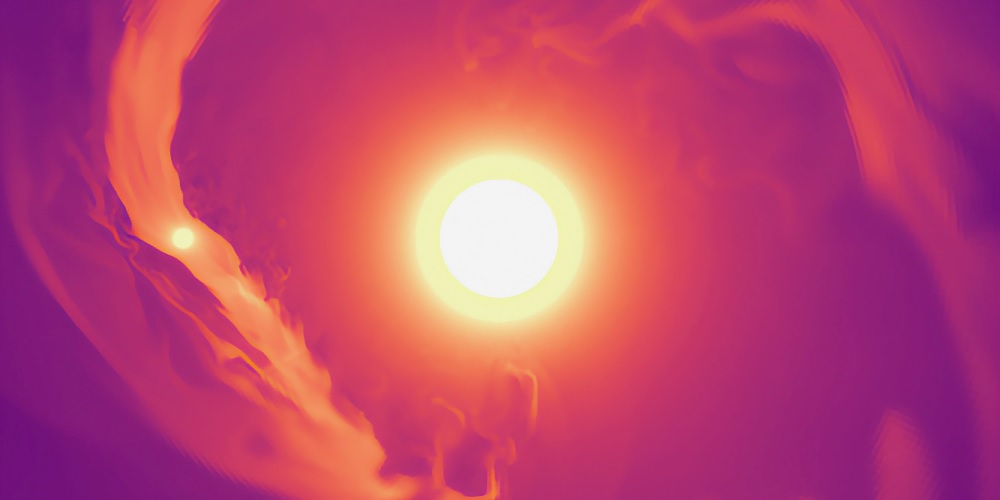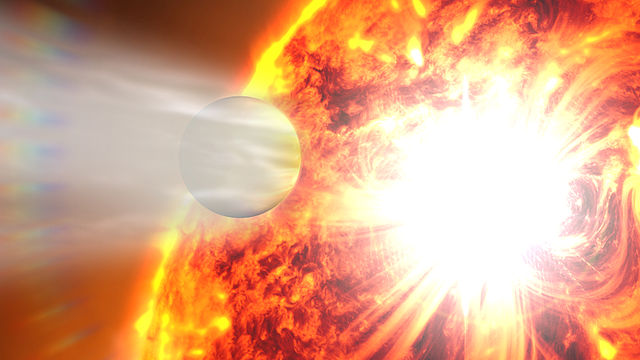Extra-solar Planet HAT-P-32 b Defies Norms with Massive Atmosphere Loss and Enormous Helium Tail

Extra-Solar Planet is known as HAT-P-32 b (Photo: Science Notizie)
Extra-Solar Planet HAT-P-32 b Unleashes Enormous Gas Tail, Defying Exoplanetary Norms
According to the Space article, an extra-solar planet located 950 light-years away from Earth is currently experiencing a spectacular transformation, marked by the dramatic expulsion of its atmosphere. This process results in the creation of an enormous gaseous tail, exceeding even the dimensions of Jupiter. This remarkable event signifies the emergence of one of the most substantial planetary structures ever witnessed outside of our solar system
Referred to as HAT-P-32 b, this extra-solar planet holds approximately 68% of Jupiter’s mass but possesses a width twice that of our largest planet. What is particularly astonishing is its proximity to its parent star, with an orbital distance of just 3.2 million miles—equivalent to a mere 3% of the Earth-Sun separation. This extreme proximity subjects HAT-P-32 b to intense radiation from its host star, classifying it as a “hot Jupiter.”
Astronomers have conducted meticulous surveillance of the trailing gas tail of HAT-P-32 b, primarily composed of helium escaping from its extra-solar planet’s atmosphere, utilizing terrestrial telescopes. Significantly, this tail extends to an astounding length, measuring 53 times the radius of the planet, resulting in the creation of a magnificent celestial spectacle.
READ ALSO: Worst Places To Live In Nebraska: A List For Curious Minds
Exploring the Enigma of Extra-Solar Planet HAT-P-32 b: Unveiling Planetary Evolution and Advancing Exoplanetary Science
According to the Newswav article, this remarkable investigation into the atmospheric depletion of HAT-P-32 b has the potential to enrich our comprehension of the development of extra-solar planets. It addresses a puzzling void within the inventory of exoplanets, marked by the absence of mid-sized planets orbiting near their parent stars, commonly known as “hot-Neptunes.”
By delving into the mechanisms responsible for the loss of atmospheres in hot Jupiters like HAT-P-32 b, scientists aspire to uncover crucial insights into the dynamics and evolutionary processes of extra-solar planets. Leveraging state-of-the-art supercomputers and sophisticated simulations, they aim to unravel the enigmas surrounding planetary atmospheres and atmospheric circulation patterns, ultimately paving the way for a more profound understanding of remote extra-solar worlds located hundreds or even thousands of light-years away from our own.
READ ALSO: What Are The Most Dangerous Places In South Dakota?









